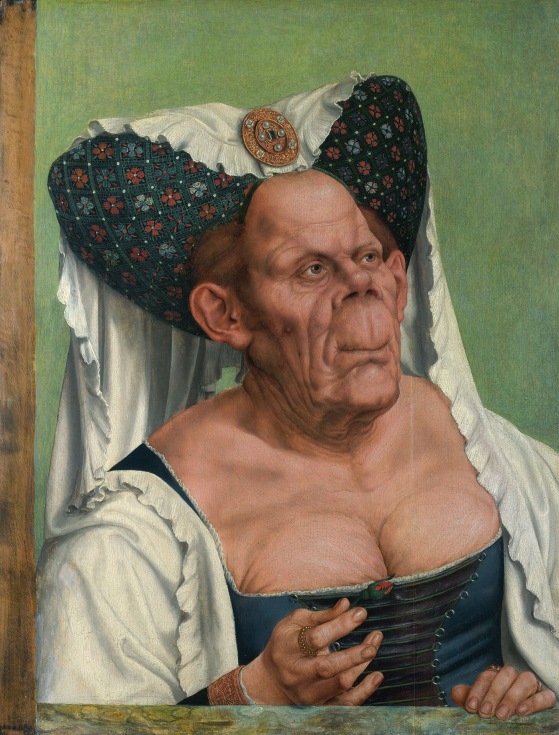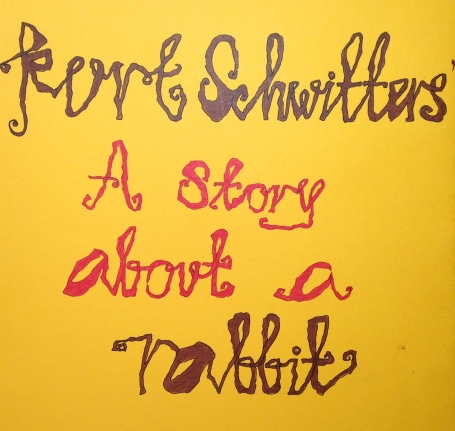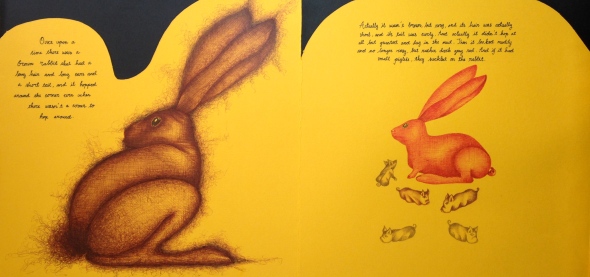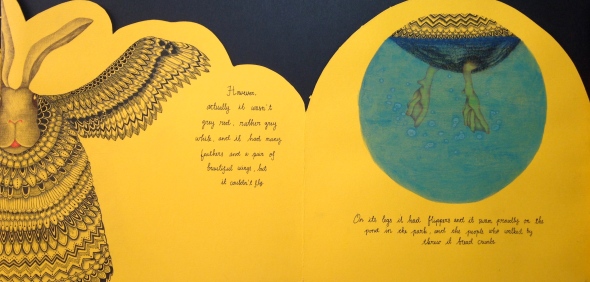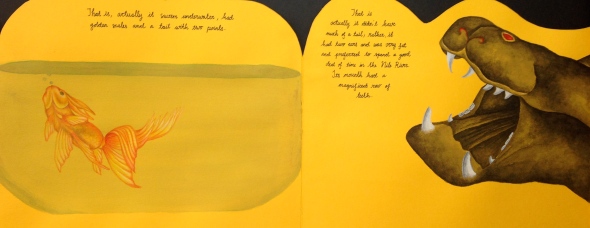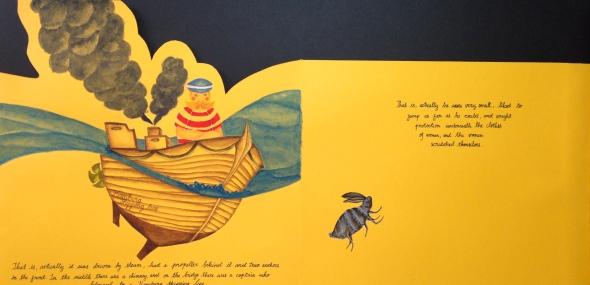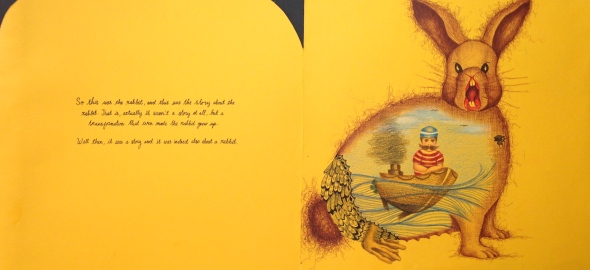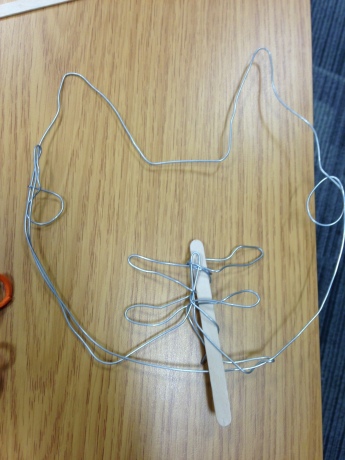Diss Reflection
Posted: January 27, 2016 Filed under: Constellation, Level 6 Dissertation, Uncategorized Comments Off on Diss ReflectionMy dissertation year was stressful but insightful. I’ve learn so much from the subject matter which is metaphor, because it links to my illustration. I’ve always been interested in the use of metaphor in visual art. Surrealists such as Rene Magritte, Frida Kahlo and Salvador Dali always captured my attention with their use of symbols and metaphor. I’ve also always been interested in social and political change throughout the year that were influenced by art, such as contemporary, modern and pop designs & art movements, fashion style and 60’s and 70’s lifestyles but as well as metaphor that were use to change the religious symbols meanings and our culture.
Soon as my proposal is agreed between my tutor and I, I began my research by reading books edited by Andrew Ortony (n.d.) Metaphor and thought, in which a collection of papers by theorists of metaphor use in communication, learning and everyday live. From this book I gathered more reference about conceptual metaphor introduced by non constructivist such as George Lakoff (1941) and Mark Johnson (1949), Max Black (1909 – 1988), Christopher Tilley (n.d.) and many others. My tutor advised me to read upon a book about symbols by Carl Jung. His book, Man and his symbols has influenced me greatly, especially with my understanding about symbols history, meanings, perceptions, myth, dreams and the unconscious/unconscious mind. From here I began to see in depth connection between symbols and metaphor, which is that one is supporting the other for use in self expression, communication and influencing change in society or individual.
I think that our library book and online collections are extensive. I have received great service from the staffs when I need it most, in particularly when I need to borrow books or online journals from other library sources. I do not have a very good writing skills, however my tutor advised me to start by making statements of research outcome into bullet points so that it would help me in constructing paragraph and chapters. I’ve also made a diagrams to make it easier for me to plan the structure of my writing. The diagrams includes plans for each chapters, quotes, theories, examples, arguments, questions and summery of my research and possible conclusion. The diagrams had helped me to keep focus on my intentions and to keep check on what I may have missed or need to investigate more.
Conceptual metaphor involves thought process. There are two domains in the metaphor where one source domain (familiar idea/concepts) is use to help explain the target domain (unfamiliar idea/concepts). The viewers is invited to find connection and comparison between two domains, thus have a new understanding about the unfamiliar idea/concepts. Our mind stored vivid images of events, memories, objects, feelings that have personal attachments, thus symbols. Each person have their own perception of symbols, in which created naturally or by culture. Lakoff & Johnson are the first to introduce a theory that when a new conceptual metaphor is introduce to an old system, it can change a person or society way of lives, however it can only happen when the old system is loss. Artist have the power to introduce new ideas/concepts through conceptual metaphor and symbols. This power can be taken advantage by certain group to gain control over the other, i.e. political, social or religious purposes. However it can also bring positive things to a person and society, therefore it can build the self and empower them. As an illustrator, I believe that this theory could bring innovative, talkative and creative way to convey my intentions through my art, therefore evoke a reaction or response from the viewers.
Artist such as Frida Kahlo whose self portrait and still life works are full of symbols and metaphor had influenced my work. In her work Self-portrait with thorn necklace and hummingbird (1940) and Moses: nucleus of creation (1945) she infused her Mexican heritage, aztec culture, her Christian belief and life stories into her work. She successfully built a relationship between her self, the work and the viewer in her self expression in conveying her feelings, emotions, suffering and aspirations & dreams. Even though she was bed ridden in majority of her life, she managed to use her mind, body and environment to create her art. She also inspired others through her Moses: nucleus of creation by taking stand on her womanhood, placing woman forward in front of male, woman as the creator of life, hence referenced to Mexican Virgin of Guadalupe symbol.
Other artists that have also inspired a generation is Jackson Pollock, in particular is his 1952 work Convergence. The paint splash & drip method, vibrant colour, texture and abstract shapes is considered to be innovative at the time where the US was looking for a change in economic condition and culture. He was a pioneer in freedom of expression and creativity in compare with the conventional european art style. Pollock has a big influence in American abstract expressionist movement. This however have been taken advantage by the CIA and used as a propaganda tool in the cold war against communist Soviet Union. New art such as jazz music was also being ‘supported’ by the CIA in order to create new America.
I hope that I did my dissertation justice. All the tutorials sessions I had was very helpful in terms of starting off my research and focus on finding the question and structure of my dissertation. My tutor was very open with consulting about other stuffs as well, so that it did not interfere with my concentration in writing. What I could take from writing dissertation is that personally, I think my academic writing skill has improved. I learnt so much from my subject matter in which also feed into my subject module. Taking from this research and writing experience, I hope that I have found a balance in creating my illustration between my skill of technical or art approach, social realism but also freedom of expression & creativity, therefore convey and communicate my intentions to inspire myself and maybe others.
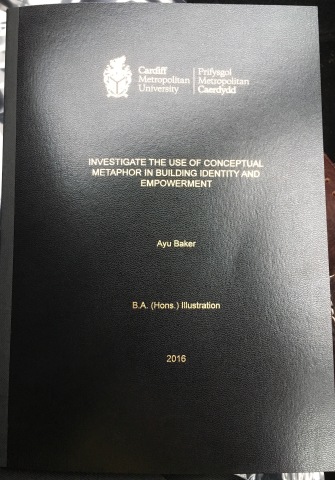
PDP
Posted: April 30, 2015 Filed under: Constellation, Dissertation Prep, Level 5 Constellation Leave a commentI knew I wanted to explore about Metaphor for my dissertation because it is also my choice of visual language. I always find artworks that have ambiguity in meanings interesting, because they are thought provoking, I particularly look up to works by Paula Rego, Kiki Smith, Louis Burgois and Georgia O’keeffe. Their artworks are heavily influenced by symbols, folklore and identity. Even though I chose mannerism instead the metaphysics of metaphor as my constellation option, I found that mannerism have fundamental association with metaphor. They both use symbols and are heavily influenced by man’s perceptions towards the subjects/objects presented. Putting my right foot forward into term 2, I found that dissertation prep lectures to be quite helpful and easy to access. They informed me the general idea of what I need to prepare for this year and what I’ll be doing next year as well.
I am glad that I have the same option tutor as my dissertation tutor. Tutorials and seminars given from my tutor at the beginning of term 2 were very helpful for developing my ideas as well as narrowing down to the right subject and focus that I want to research or study. As suggested by my tutor, it is always helpful to have a dissertation theme that correlates with my subject module. Both modules will support each other and I can say that they have. I began reading books about symbols by Carl G. Jung (1875-1961) and visual metaphor book such as ‘Pictorial metaphor in advertisements and billboards’ book by Charles Forceville (1996). Theory of Symbols explained by Jung in his book ‘Man and His Symbols’ (1972) has opened up my view about the deeper unserdtandings in symbolism and perceptions as well as its power to influence our perspectives in our beliefs, religions, politic, social and psychology. Jung used dreams produced by his patients and analysed the symbols in it by finding symbols’ relationship with reality. Each symbols has different meaning and association to every man. Forceville’s book got me interested in the use of metaphor for communication, science/math and politic. He introduces a new concept of ‘Pictorial metaphor’ by analysing the amount of metaphors found in an image. From this moment I realised that I want to dig deep about the use of metaphor, especially in building identity and empowerment.
My tutor really helped me when I’m stuck with finding connection between symbols and metaphor. She suggested me to look and analyse from different angles or fields manifested with metaphors, such as folklore and primitive ceremony. I began to expand my understanding of metaphor by reading ‘Metaphor and Thought’ book by Adrew Ortony (1993). The contents of this book is vast because it’s a collection of papers by academics that studied different fields where metaphors are used – in communication, education, learning and science. Here I found the definitions and differences between the literal and metaphor. I continued my research to Journals about metaphor used in empowerment. I found that the library’s collection is huge and quite daunting, however the service that our library provides for hard copies and online journals are remarkable and need a little getting use to manoeuvre.
Right before the Easter break, I had a final tutorial with my diss tutor. I think panic and nervousness took over my head but she reassured me that I just need to keep calm and do it step by step. I can not fault the support she gave me. I made sure that I have all I need to write. As I am a slow reader, it took me weeks to read the books. I planned the paragraphs in bullet points and then expanded the ideas. The concepts and theories that I focused on are by Carl Jung, Max Black, Lakoff & Johnson as well as few case studies. The case studies I chose are the ones that used metaphors to empower women who had been subjected to abuse in South Africa, Mexico and Pakistan. I’m also considering to analyse my ongoing art base workshop project working with a local charity in Cardiff. However I am worry that I may not be objective in voicing my opinions.
I also like using mind map to explore ideas, questions and possibilities, so I included a diagram of my initial ideas and images as examples which I am going to use to explain about the use of metaphor in my dissertation. Metaphor’s best characteristic is it helps describe abstract concepts/values, especially in science. Metaphor is highly used in teaching math and science. Many scientist and physicists used metaphor in understanding matter that they are studying by sketching/drawing e.g: Darwin and J.M. Cajal.
The dissertation preparation & proposal forms provided for us are quite straight forward and structured. The questions and explanations assisted me like a step by step guide in planning my dissertation. If I were to change the subject of my dissertation next year, I think the proposal form would be used again.
Hiroshima Mon Amour
Posted: December 10, 2014 Filed under: Constellation, Level 5 Constellation, Mannerism | Tags: death, Film, Hiroshima, Hiroshima Mon Amour, love, Mannerism, suffering Leave a commentThe film was made in 1959 and directed by Alain Resnais. The film tells a story of a French actor who is filming an anti-war film in Hiroshima and has an affair with a married Japanese architect. The two main characters interchange their perspective in war and on love. The film was nominated for Oscar in 1959 for best writing, story and screenplay, won the BAFTA awards for Best director (1959), nominated for Palme d’Or for Alan Resnais, won New York Critique Circle Awards for Best foreign language film (1960) and among many others.
The film was considered to be ahead of its time. It used flashback technique which was innovative to the time. The story is also tell about love and suffering by presenting the remembrance of the horrific event through newsreel and documentary footage, the phase is slow yet calculated, repetition in words and ideas. This techniques is effective in engaging the audience with the story and creates emotion also memory of feeling of love and happiness.
Here’s the trailer. The film is worth watching.
“Ugly” and “Strange” in art and design
Posted: November 13, 2014 Filed under: Constellation, Level 5 Constellation, Mannerism | Tags: Quentin Massys, The Ugly Duchess, Ugly Leave a commentUGLY
There is no positive without the negative. There would be no beauty without ugliness. The definition of ugly to me lays on the assumptions of ugliness. For example portraits that are showing who they really are instead of what they look like (realistic face).
In Quentin Massys’ The Ugly Duchess he painted a satire of an old woman (in around 1513) who try to recreate her youth. She is wearing a beautiful old fashion dress and headdress. Her face is ‘unnatural’ shape. The wrinkle on her skin tells how old she is, which most probably more than a hundred years old. She is holding a red flower which indicates that she is looking for companion.
In this painting, Massys is depicting an woman who suffered from a malfunction of bone disease (Paget’s disease).
Therefore, I think he is showing us to look beyond the portrait.
The Ugly Duchess – http://en.m.wikipedia.org/wiki/The_Ugly_Duchess#/image/File:Quentin_Matsys_-_A_Grotesque_old_woman.jpg date: 13/11/2014
STRANGE
Strangeness is presenting subject matter through different points of view so that the viewers would see the world in a different way or strange and unfamiliar way in order to extend its perceptions.
In my illustration, these technique could help me express the unseen within the narrative, the invisible to our eye without being literal which therefore could give more understanding and have more meaning.
Reality in Art & Design
Posted: November 13, 2014 Filed under: Constellation, Level 5 Constellation, Mannerism Leave a commentOne of the most famous work of Jackson Pollock is Convergence, which was painted in 1952 (oil on canvas). He’s one of the leading figure in the American expressionist art movement. The painting embodied the American ideals of freedom of speech and expression.
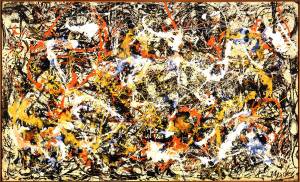
Jackson Pollock – Convergence, 1952 http://uploads2.wikiart.org/images/jackson-pollock/convergence-1952.jpg – date 13/11/2014
In the same year, below screenprint and watercolour painting was created by Ben Shahn (Lithuanian American). Not many people knew about this painting at the time. It represents the lives of industrial workers, farmers and families. He used his work as a voice against injustice.
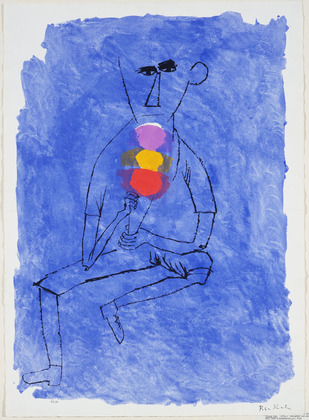
Ben Shahn – Tripple Dip, 1952 http://www.moma.org/collection//browse_results.php?object_id=68193 – date 13/11/2014
There was tension between the US and the Soviet Union. The western believe that the spread of communism anywhere threatened democracy and capitalism everywhere. Therefore, communism needed to be contained by diplomacy, by threats and even by force. Unbeknownst to the artists, American Expressionism movement was funded by the CIA (used as propaganda tool vs Soviet oppression). The CIA appreciated his style because it does not express social realism and communicate political gesture. Meanwhile there was a rising in civil rights movement spoke out against inequality and injustice (African Americans and feminist).
In my opinion, the art is still very much influenced by who have the power to control (i.e. money, politics or religion). What I think is best to do is to keep my perception open and always see things from different perspectives so that the art will not be bias.
Rietvield Schroder House
Posted: November 13, 2014 Filed under: Constellation, Level 5 Constellation, Mannerism Leave a commentThe house was designed by Gerrit Rietvield in 1924 for Truus Schroder. The house is influenced by Neo Plasticism (artists and architects). The design is a head of its time. Composition is portrayed in multiple layers and is simplified in vertical and horizontal lines, form, shape, colour and transparency. The Use of primary colour creates a negative and positive space. Open space with changeable partition walls that can be adjusted based on the need of the people who live in it. It creates a sense of the outside is inside. The material, architects and resistance of the matter influenced each other to create mutual involvement.
Introduction to Mannerism
Posted: November 7, 2014 Filed under: Constellation, Level 5 Constellation, Mannerism | Tags: constellation, Lecture, Mannerism Leave a commentMannerism art movement began in 15c. The term developed from italian word Maniera or style in painting, sculpture as well as architecture. Artists are beginning to defy the guideline from the power that be (i.e religion/church).
PDP Entry
Posted: May 5, 2014 Filed under: Constellation, Level 4 Constellation Leave a commentAs an illustrator, I constantly think about how to make image that speaks to the viewers. It tells them a narrative, brings life to an idea or concept visually, it contains a message, transfers information and offers a visual addition to a text. It also must be able to present the object in an interesting and engaging manner. When I was first introduced with Constellation, I have a lot of questions. The “How am I going to use this knowledge for my discipline”?, “Is constellation going to take out time of drawing?” and “Is PDP going to do any good for my drawing skill?” and so on. I attended in the first term of keynote and study skill sessions with open mind. I needed to find the answers to my questions. Some of the keynote and study skill were very interesting. “Making” keynote by Dr. Jon Clarkson and Prof. Jeff Jones has theories that have correlation to my discipline. Dr. Mahnaz Shaz’s study skill “Identifying a question” was actually the one that I enjoyed the most even though at first it was quite a hard subject to grasp but the sessions has introduced me to think critically by looking deeper into what, how and when of an art is. By the end of term, I still haven’t found what will constellation bring toward my illustration study.
On the second term, the theory has become more focus. I chose “Expressing the unseen” by Dr. Martyn Woodward because I like what he presented on the presentation session and I feel that the subject have close relation in the theory part of my discipline. Through out the study skill sessions, I began to understand that by learning the history and theory I can enhance my image making technique, but it also has introduced me to see from different point of views. Embodiment, Constructivist perception and Defamiliarization theory has helped me understand more about design and image making that can send message visually. Some of the practices that I have done as an illustrator were in Words to draw by and Personification. During my research for my individual – Field work, I found an inspirational book that applies Defamiliarization theory written by Kurt Schwitters tittled “The story about a rabbit”. I managed to practice my narrative skill though making strange technique. On the fourth & fifth week, I’ve learnt that our experience, psychology, material and environment affect my way of design and making activity.
I think Constellation has influenced me in the way of seeing an artwork and design and to think more critically. I will continue to find correlation between principles, theory and technique and investigate which practise that can improve my illustration skill. I will continue to open my mind to opportunities of learning new knowledge. I also feel that by documenting the progress and development of my study by blogging has improved my confident in promoting my artwork even though I’m still at the amateur level. It’s also a good place to express, reflect and evaluate my work for better result in the future.
A story about a rabbit by Kurt Schwitters
Posted: May 3, 2014 Filed under: Constellation, Field, Individual | Tags: art, book, illustration, inspiration, Kurt Schwitters Leave a comment
This is the final book of “A story about a rabbit” by Kurt Schwitters. During the development of the book and based on progress feedback I’ve received, I feel that this project is more suitable for my Constellation – defamiliarization theory practice. The design is influenced by Laura Hyde illustration. Even though I won’t be submitting this piece as one of Individual – Field project work, I’m glad that I found this book as inspiration and narrative practice as well as a material for my Constellation essay.
During his life, Kurt Schwitters had produced many publications, paintings, collage/assemblage art works which influenced many great artists such as Jasper Johns and Robert Rauschenberg. This book was one of his publication.
Once upon a time there was a brown rabbit that had long hair and long ears and a short tail, and it hopped around the corner even when there wasn’t a corner to hop around. Actually it wasn’t brown, but rosy, and its hair was actually short, and its tail was curly. And actually it didn’t hop at all but grunted and dug in the mud. Then it looked muddy and no longer rosy, but rather dark grey red. And if it had small piglets, they suckled on the rabbit. However, actually it wasn’t grey red, rather grey white, and it had many feathers and a pair of beautiful wings, but it couldn’t fly. On its legs it had flippers and it swam proudly on the pond in the park, and people who walked by threw it bread crumbs. That is, actually it swam underwater, had golden scales and a tail with two points. That is actually it didn’t have much of a tail; rather, it had two ears and was very fat and preferred to spend a good deal of time in the Nile River. Its mouth had a magnificent row of teeth. That is, actually it was driven by steam, had a propeller behind it and two anchors in the front. In the middle there was a chimney, and on the bridge there was a captain who belonged to a Hamburg shipping line. That is, actually he was very small, liked to jump as far as he could, and sought protection underneath the clothes of women, and the women scratched themselves. So this was the rabbit, and this was the story about the rabbit. That is, actually it wasn’t a story at all, but a transformation that even made the rabbit grow up.
Well then, it was a story and it was indeed also about a rabbit.
From Kurt Schwitters: Lucky Hans and other Merz fairy tales – translated by Jack Zipes. 2009
Why do we make?
Posted: February 27, 2014 Filed under: Constellation, Term 2 - Expressing the unseen Leave a commentIt was an interesting day. In today’s lecture, I’m introduced with what I recognise as ‘Design’ is rather more like ‘Growth’. I understand better when I get the chance to do experiment in order to prove a theory. So my lecturer gave each of us different materials to make something with. I was given craft wire, the others got clay in variety of colours and wooden sticks. While in the process of making, Dr. Martyn played us an instrumental music. After ten minutes or so he changed the music into a different one but still an instrumental/acoustic sound. So here is what I made at that moment:
I’ve made a cat mask. At first I wanted to do a star shape and then the music came on. The music made me think of a cat. And I remember a cat was the last image I saw in the morning before I went to Uni. In the second session of the lecture, my lecturer explained to us that the music he played for us was an acoustic music made by Highland gypsy acoustic group who like to travel into the forest. The ‘artefacts’ that we all made somehow resembles with the flow and rhythm of the music. The sound of the music sort of influenced my hand movement. After ten minutes, a similar music played and it made my hand movement more flowy in accordance with the music. Surprisingly the forms of the the artefacts resembles nature (sun, wave, river current, tree, and fire). Colour has also gave input into the mind of the creator, e.g. someone has made a form that looks like a sea wave based on the colour of the clay which was blue, and someone made a fire based on the red colour clay. I found that the environment influenced the creator when making as well as the material; and in my case I also input my own memory into my artefact.
So in conclusion, creativity is more complex than just following a step by step plan or instructions. What we recognise as a ‘Design’ is actually rather more like ‘Growth’. The practitioner’s movement, the environment (conditions) and materials/properties and resistance of matter are all influence each other which create a mutual involvement.






